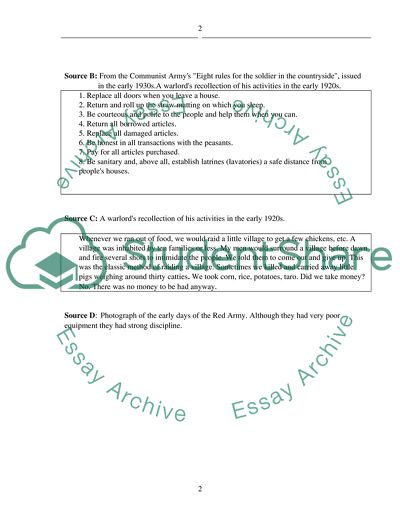Source base questions - KMT-CCP rivalry Essay Example | Topics and Well Written Essays - 500 words. Retrieved from https://studentshare.org/miscellaneous/1537596-source-base-questions-kmt-ccp-rivalry
Source Base Questions - KMT-CCP Rivalry Essay Example | Topics and Well Written Essays - 500 Words. https://studentshare.org/miscellaneous/1537596-source-base-questions-kmt-ccp-rivalry.


